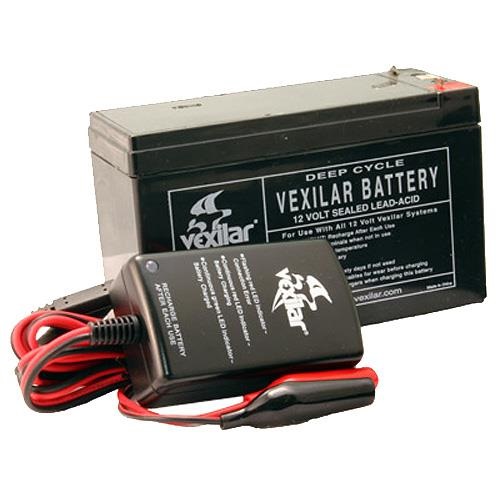 Lead acid batteries are the source of power for most of the equipment on today’s boats. They have a tough job and get little respect for what they do. They must provide us with a constant voltage and current supply while enduring temperature extremes, shock, vibration, and for the most part, ignorant owners. Today, more and more depth finders are being used on the ice in the winter. This environment provides an even more challenging job for the battery. But, in the end, most batteries, whatever the environment, fail prematurely because of simple neglect.
Lead acid batteries are the source of power for most of the equipment on today’s boats. They have a tough job and get little respect for what they do. They must provide us with a constant voltage and current supply while enduring temperature extremes, shock, vibration, and for the most part, ignorant owners. Today, more and more depth finders are being used on the ice in the winter. This environment provides an even more challenging job for the battery. But, in the end, most batteries, whatever the environment, fail prematurely because of simple neglect.
The basic lead acid battery design has remained much the same over the past 80 years, relying on the potential developed between two dissimilar electrodes immersed in an electrolyte of dilute sulfuric acid. Some refinements were made to construction in the late 1960′s. The positive plate was changed to a tubular construction, instead of flat, increasing the surface area and hence the obtainable energy from a given size. Electrodes are constructed with a grid of lead-antimony and active material pressed into the grid spacing. Some chemical additives are binders to keep the paste together and expanders to allow an increased surface area, as it is surface area that comes into contact with the electrolyte and produces the electrical energy. The larger the surface area the greater the energy.
BATTERY DO’S
- Allow battery to FULLY recharge before use. Recharge the battery AFTER EACH USE.
- Give cold batteries extra time to charge. Charge at room temperature if you can.
- Keep Flames, Sparks, and Metal objects away from batteries and terminals.
- If the battery is an open type, add distilled water AFTER battery is recharged.
- Keep the battery clean and dry.
- Charge periodically during battery storage.
BATTERY DON’TS
- OVER DISCHARGE the battery, You should never drain a battery beyond 80%, meaning less than 20% left.
- OVERCHARGE the battery. Measure the voltage of the battery while charging. It should never go over 15 volts.
- DISCONNECT battery before switching the charger OFF.
- Damage the battery or terminals by dropping.
These same rules apply to large deep cycle batteries and small sealed lead acids (commonly referred to as a “gel cell”), such as our V-120 battery. The only difference is the amount of energy they can hold. Never the less, always follow the battery manufacturers charging recommendations to get optimal charging for that battery. With the right care and maintenance you will be surprised how long a battery will last you. http://www.vexilar.com/
